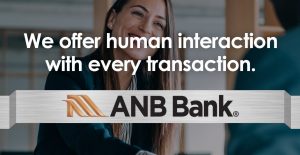At The Healing Conference in Grand Junction, CO, M. Curtis McCoy offered valuable insights on leveraging paid media and personal branding to enhance visibility and influence. Let’s dive into his key strategies that can help elevate your brand and build a sustainable platform.
Understanding Earned vs. Paid Media
M. Curtis McCoy started by addressing the difference between earned and paid media. Earned media refers to publicity gained through organic means, such as being featured in newspapers or on radio shows. In contrast, paid media involves paying for exposure, like magazine covers or featured blog posts. Depending on one’s strategy and resources, both can serve vital roles in brand growth.
Money as a Tool, Not a Root of Evil
A common misconception is that “money is the root of all evil,” but M. Curtis McCoy clarifies that the love of money can lead to harm. Money itself is a tool—it can amplify positive and negative impacts, depending on the person wielding it. For those with positive intentions, financial success can facilitate broader outreach and good deeds.
The Value of Stepping Up
M. Curtis McCoy emphasized that failing to level up your influence can result in missed opportunities. He encouraged the audience to actively pursue goals and not shy away from reaching wider audiences. Doing so benefits personal growth and positions individuals to help others on a greater scale.
Paid Media in Action: Examples from McCoy’s Portfolio
M. Curtis McCoy shared some inspiring examples of paid media strategies, including recent News Wire Magazine covers and Amazon Fire TV features for his clients. From interviews to full magazine spreads, he explained the detailed process—from scripting and syndication to strategic placement online and offline. These methods help create authority, particularly in reputable publications with established histories like Newswire.
Verifying Publication Credibility
One crucial step M. Curtis McCoy highlighted is ensuring a publication’s credibility. Individuals can avoid investing in untrustworthy sources by checking domain authorities, such as using tools like ICANN. Authenticity in publications lends legitimacy to your brand, which paid media alone can’t guarantee.
The Importance of Prequalification in Paid Media
M. Curtis McCoy emphasized quality over quantity in client selection. Not every client qualifies for his services; he seeks to work with individuals who provide real value, not just those who can afford high-end packages. This prequalification process ensures that the platform remains meaningful and trusted by audiences.
The Power of Syndication: Expanding Your Reach
After conducting interviews, McCoy’s team syndicates content to various platforms, including Amazon Fire TV and YouTube. The content is then further promoted on social media and search engines, creating an ecosystem that continuously drives traffic to the client’s website, enhancing visibility and credibility.
Integrating AI with SEO for Greater Reach
M. Curtis McCoy touched on the use of AI in content creation. Though he acknowledged that AI-generated content often lacks quality, he highlighted its usefulness for building links and reinforcing previously published work. His advanced SEO strategy drives search engine traffic to clients’ websites, significantly improving their rankings.
Start with What You Have: The DIY Approach to Personal Branding
For those just starting out or with limited budgets, M. Curtis McCoy advised leveraging free methods, such as podcasts or social media engagement, rather than immediately investing in paid media. By consistently creating and sharing valuable content, individuals can build a following without significant upfront costs.
Repurposing Content for Maximum Impact
M. Curtis McCoy shared an effective content strategy: repurpose video or audio content into blog posts to drive traffic between platforms. For example, a podcast transcript can be edited, enhanced with visuals, and published on a website. This creates dual engagement channels, as visitors may discover the podcast or find value in the blog post, driving traffic in both directions.
Control Your Traffic: The Ownership Principle
Rather than directing audiences to third-party platforms like Spotify or YouTube, McCoy stressed the importance of driving traffic back to your website. Owning your traffic allows for more control, whether through calls to action, product promotions, or affiliate marketing.
The PTO Principle for Social Media Success
M. Curtis McCoy mentioned the PTO principle: “Provide, Teach, and Offer.” By consistently sharing value—80% value content and 20% promotional content—brands can build trust before pitching their products or services. This balance fosters a loyal following and primes the audience for conversion.
Charging for Value: Embracing Financial Growth
Charging for services is not inherently negative. As McCoy stated, charging a reasonable price for quality services allows brands to expand their reach and solve more problems. When done ethically, financial growth empowers brands to have a more significant impact.
Monetizing Conferences and Speaking Events
Attending conferences can be costly, and M. Curtis McCoy advised finding ways to monetize such opportunities. For instance, recording a speech or sharing it on social media extends its reach, creating residual value from a one-time event. Conferences can provide both immediate exposure and long-term online traffic when shared strategically.
Final Thoughts: Time to Level Up
McCoy’s final message to the audience was a call to action: it’s time to level up. Leveraging paid and earned media, strategic content repurposing, and robust SEO can transform any brand’s reach. By consistently stepping into the spotlight and sharing valuable content, anyone can build a strong personal brand with far-reaching effects.
M. Curtis McCoy’s advice is a roadmap for personal branding, whether you’re just starting or looking to expand your reach. By implementing these strategies, you can take meaningful steps toward growing your influence and positively impacting your audience.







